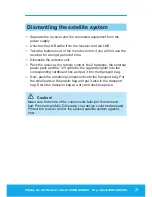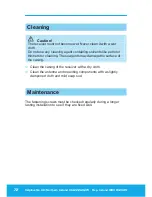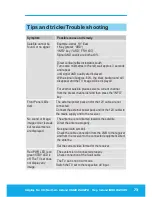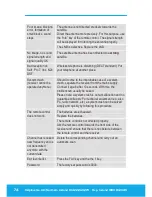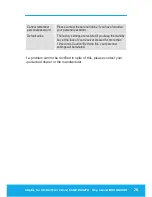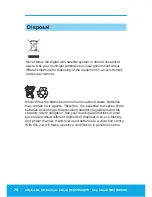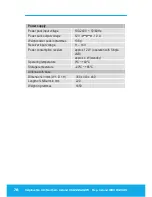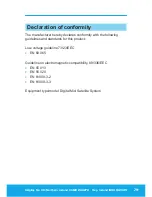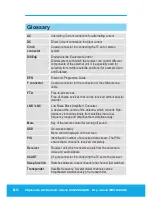
Helpline No. UK/Northern Ireland 01422 263270 Rep. Ireland 1890 812049
Helpline No. UK/Northern Ireland 01422 263270 Rep. Ireland 1890 812049
Helpline No. UK/Northern Ireland 01422 263270 Rep. Ireland 1890 812049
8
1 Turn the dish on the horizontal plane towards the east (left as
viewed from behind), 2 or 3 degs at a time and then wait to
hear the audible signal indicator change, wait for two or three
seconds, adjust 2 or 3 degs and wait again, after the second
or third adjustment you should hear a change in the sound
level, its a good idea to have a friend relaying the signal
intensity and quality reading during this stage.
ONLY MOVE THE LNB ARM BY 2 OR 3 MM AT A TIME, IF
YOU MOVE IT TOO MUCH YOU WILL GO PAST THE
SATELLITE AND NO SIGNAL CHANGE WILL BE NOTED.
IF YOU STAND IN FRONT OF THE DISH YOU WILL
BLOCK THE SIGNAL, GET OUT OF THE WAY TO CHECK
SIGNAL READINGS.
2 What you are trying to achieve at this point is an increase in
the signal quality (the intensity will take care of itself). As you
move the dish past the satellite the quality will go down
(usually accompanied by a reduction in the audible tone).
3 If all is well you have just located the satellite, you have gone
from a low signal to the south of the satellite to a low signal
to the east of the satellite. This typically takes place with no
more than a 10 to 15 mm movement in the LNB arm (quite a
fine adjustment), it is easy to see now why just moving the
dish about and hoping will not work.
4 Move the dish direction back towards the south to achieve
maximum signal quality (this still may be quite low 14 to
18%), you now have the direction fine tuned.
5 Now concentrate on the elevation, without moving the
direction slowly move the LNB arm near the dish up thereby
increasing the elevation from the horizon, yet again a peak
will be noticed as you go past the optimal point, move the
dish back down to achieve max signal quality.
6 You have now narrowed the alignment to a small area, move
the dish horizontally to the left until the signal falls, and then
back to the right until the signal falls, in the middle is the
correct alignment, if you go over this again first with the
horizontal, and then the vertical you will have pinpointed the
highest signal and therefore the correct alignment of the dish
to that particular satellite.
At this point you should expect
that a signal quality of 60 – 70
% and a signal intensity of 70% can be achieved.
These instructions are good for a location from the midlands to
the north, and as explained at the start elevation increases and
decreases depending upon your location on the earths surface,
so for the south of England elevation is about 5 degrees and for
the north of Scotland the elevation needs to be minus i.e. the
dish needs to be leaning forward 2-3 degrees.
NOTE: You can also use the includ
ed “Satellite Bleeper” to assist
in fine tuning the position of th
e dish. Refer to the instructions
included with the “Bleeper”.

